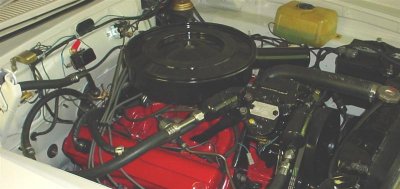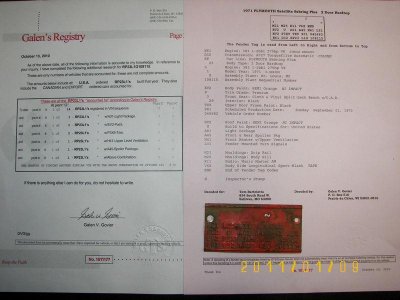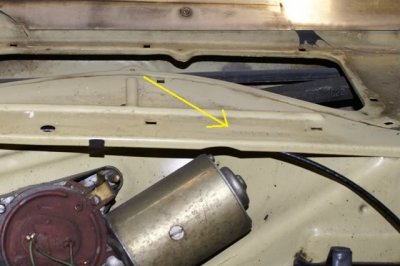696pack posted this in another thread and suggested it should be a sticky. So with that in mind and thanks to Darryl.........
Matching numbers means different thing to MAKES of cars and different model year cars.
Here is a definition for MOPARS :
1. The first thing you want to check is the V.I.N. of the vehicle against the title or in some states the registration.
2. The second thing to check is the fender tag against the body codes.
A. For 1968 and older vehicles , the S.O. number is stamped on the body.
B. For 1969 and newer vehicles , the V.I.N. number is stamped on the body.
3. The next thing to check is the fender tag against the S.O. number or the V.I.N. in the "hidden numbers" locations on the body. You will find thes numbers in different loctations depending on the model year and body platform.
A. 1966-68 will have the S.O. number on the upper portion drivers side radiator core support.
B. 1966-67 MAY also have it on the drivers side rear body cross member that the bumper support bolts to.
C. 1968 will also have it stamped on the driver's side trunk opening lip under the weather stripping.
D. 1969 and newer vehicles will have the V.I.N. stamped on the driver's side upper portion of the radiator core support.
E. 1969 and newer B bodies also have it stamped on the driver's side trunk opening lip under the weather stripping.
F. 1970 E bodies will have it stamped on the driver's side cowl near the vent cover and will NOT have it on the driver's side trunk opening lip under the weather stripping.
4. The next item that is VERY important to numbers matching is the engine. For all 1967 and older engines (including low performance 1968 engines) you have to date the engine prior to the scheduled production date of the vehicle.
A. Small block engines (273-318-340-360) have the date stamped on the front of the below the driver's side cylinder head.
B. Big block B engines (383-400) have the date stamped on the front of the below the passenger's side cylinder head.
C. Big block RB engines have the (413-426-440) have the date stamped on the front of the block in front of the intake manifold ajacent to the distrbutor. This is true for all 1964-1967 Hemi engines.
D. Big block 426 RB engines have the date stamped on the oil pan rail at the rear flange under the starter. This is true for all 1968 383 & 440 engines.
For 1969 and newer engines (including 1968 high performance engines) a full or partial V.I.N. is stamped on the engine block.
E. 1968 HP engines are stamped on the top rear of the block near the oil sending unit.
F. 1969 and newer V8 engines are stamped on pad at the lower passenger side of the block above the oil pan.
Note: Early in the 1969 model year the complete 13 digit was stamped on the engine and transmission. mid year 1969 and later engines only the last 8 digits of the V.I.N. were stamped on the engine and transmission.
5. The next item that is important to numbers matching is the transmission.
For 1969 and newer engines (including high performance 1968 engines) a full of parial V.I.N. is stamped on the transmission case.
A. 1968 and newer manual transmissions are stamped on a raised pad on the passenger side of the case.
B. 1968 only automatic transmissions (high performance V8) are stamped on the top front of the case where it meets the engine.
C. 1969 and newer automatic transmissions are stamped on a raised pad on the passenger side front of the case.
6. The last item that relates to numbers matching is the door V.I.N. decal.
For 1970 and newer vehicles (including 1969 Daytonas) the door V.I.N. decal is on the driver's side door jamb.
The above definition comes from GGs white books.
It is pretty much word for word except that I left out his references to where to find this info in his other books, and I changed #3 as HIS info was referring to contacting him for matching V.I.N.s in HIS registry.
As you can see, It becomes more involved with more numbers to check the newer the car gets. It is also confusing for people because the "hidden numbers" are different depending on the year of the car as to the factories use of S.O. numbers and V.I.N. You will notice that there is no V.I.N. located on the engine or transmission for 1967 and older AND this also applies to 1968 models as they were randomly stamped with the V.I.N. thoughout the model year with apparently no rhyme or reason.
Depending on who you talk to and how they view things in life, (weather the glass is 1/2 full or 1/2 empty,) they will argue as to the numbers matching engine and transmission on a 68 and older vehicle since it has no V.I.N. stamped on them. MY OPINION on this is that if the casting date of the engine and transmission proceeds the scheduled production date of the vehicle that they MATCH. After all who can DISPROVE that they are not the ORIGINALS.
You will notice that NONE of this references broadcast sheets as they were never intended to be purposely left in the vehicles and were certainly never intended to be use by the public for any I.D.ing purposes.
It also has nothing to do with identifing re-stamping done by others AFTER the vehicle LEFT the factory new. This is done more often than some people think and it is important to know since many people advertise cars that are matching numbers that in fact ARE, but NOT THE ORIGINAL ENGINE OR TRANSMISSION. They are not lying to anyone but it is something people need to know as they are two different things.
Matching numbers means different thing to MAKES of cars and different model year cars.
Here is a definition for MOPARS :
1. The first thing you want to check is the V.I.N. of the vehicle against the title or in some states the registration.
2. The second thing to check is the fender tag against the body codes.
A. For 1968 and older vehicles , the S.O. number is stamped on the body.
B. For 1969 and newer vehicles , the V.I.N. number is stamped on the body.
3. The next thing to check is the fender tag against the S.O. number or the V.I.N. in the "hidden numbers" locations on the body. You will find thes numbers in different loctations depending on the model year and body platform.
A. 1966-68 will have the S.O. number on the upper portion drivers side radiator core support.
B. 1966-67 MAY also have it on the drivers side rear body cross member that the bumper support bolts to.
C. 1968 will also have it stamped on the driver's side trunk opening lip under the weather stripping.
D. 1969 and newer vehicles will have the V.I.N. stamped on the driver's side upper portion of the radiator core support.
E. 1969 and newer B bodies also have it stamped on the driver's side trunk opening lip under the weather stripping.
F. 1970 E bodies will have it stamped on the driver's side cowl near the vent cover and will NOT have it on the driver's side trunk opening lip under the weather stripping.
4. The next item that is VERY important to numbers matching is the engine. For all 1967 and older engines (including low performance 1968 engines) you have to date the engine prior to the scheduled production date of the vehicle.
A. Small block engines (273-318-340-360) have the date stamped on the front of the below the driver's side cylinder head.
B. Big block B engines (383-400) have the date stamped on the front of the below the passenger's side cylinder head.
C. Big block RB engines have the (413-426-440) have the date stamped on the front of the block in front of the intake manifold ajacent to the distrbutor. This is true for all 1964-1967 Hemi engines.
D. Big block 426 RB engines have the date stamped on the oil pan rail at the rear flange under the starter. This is true for all 1968 383 & 440 engines.
For 1969 and newer engines (including 1968 high performance engines) a full or partial V.I.N. is stamped on the engine block.
E. 1968 HP engines are stamped on the top rear of the block near the oil sending unit.
F. 1969 and newer V8 engines are stamped on pad at the lower passenger side of the block above the oil pan.
Note: Early in the 1969 model year the complete 13 digit was stamped on the engine and transmission. mid year 1969 and later engines only the last 8 digits of the V.I.N. were stamped on the engine and transmission.
5. The next item that is important to numbers matching is the transmission.
For 1969 and newer engines (including high performance 1968 engines) a full of parial V.I.N. is stamped on the transmission case.
A. 1968 and newer manual transmissions are stamped on a raised pad on the passenger side of the case.
B. 1968 only automatic transmissions (high performance V8) are stamped on the top front of the case where it meets the engine.
C. 1969 and newer automatic transmissions are stamped on a raised pad on the passenger side front of the case.
6. The last item that relates to numbers matching is the door V.I.N. decal.
For 1970 and newer vehicles (including 1969 Daytonas) the door V.I.N. decal is on the driver's side door jamb.
The above definition comes from GGs white books.
It is pretty much word for word except that I left out his references to where to find this info in his other books, and I changed #3 as HIS info was referring to contacting him for matching V.I.N.s in HIS registry.
As you can see, It becomes more involved with more numbers to check the newer the car gets. It is also confusing for people because the "hidden numbers" are different depending on the year of the car as to the factories use of S.O. numbers and V.I.N. You will notice that there is no V.I.N. located on the engine or transmission for 1967 and older AND this also applies to 1968 models as they were randomly stamped with the V.I.N. thoughout the model year with apparently no rhyme or reason.
Depending on who you talk to and how they view things in life, (weather the glass is 1/2 full or 1/2 empty,) they will argue as to the numbers matching engine and transmission on a 68 and older vehicle since it has no V.I.N. stamped on them. MY OPINION on this is that if the casting date of the engine and transmission proceeds the scheduled production date of the vehicle that they MATCH. After all who can DISPROVE that they are not the ORIGINALS.
You will notice that NONE of this references broadcast sheets as they were never intended to be purposely left in the vehicles and were certainly never intended to be use by the public for any I.D.ing purposes.
It also has nothing to do with identifing re-stamping done by others AFTER the vehicle LEFT the factory new. This is done more often than some people think and it is important to know since many people advertise cars that are matching numbers that in fact ARE, but NOT THE ORIGINAL ENGINE OR TRANSMISSION. They are not lying to anyone but it is something people need to know as they are two different things.


















